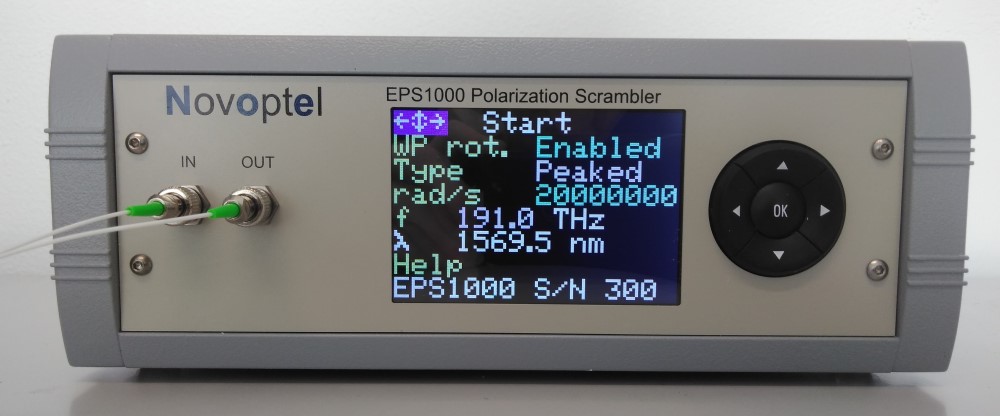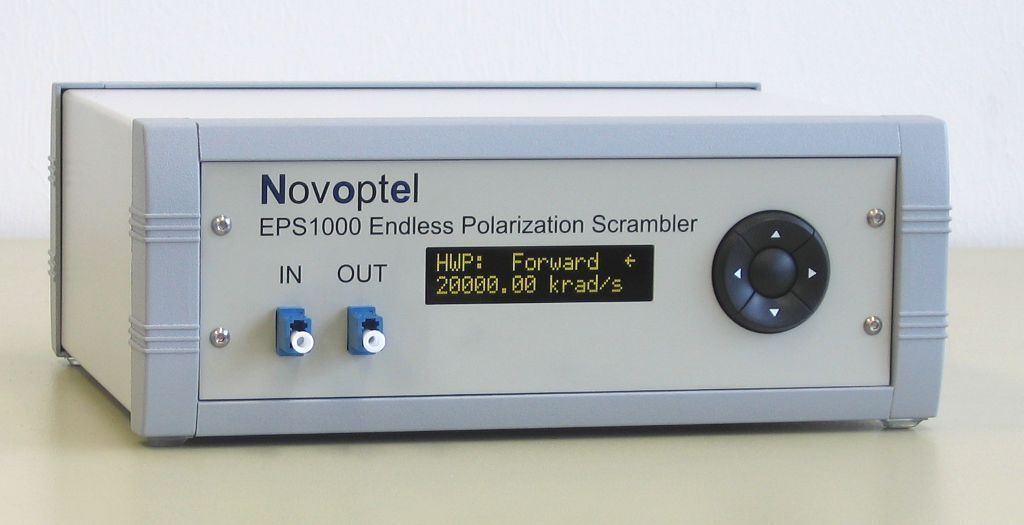EPS1000 Polarization Scrambler/Transformer/Depolarizer
Key features
- Ultrafast endless optical polarization scrambling at up to 20 Mrad/s, or 50 Mrad/s with less waveplates, based on electrooptic waveplates with adjustable rotation speeds
- Clock cycles (= updating intervals) down to 10 ns assure continuous, quasi-steady polarization changes even at high scrambling speeds (e.g., in 0.01 rad steps at 1 Mrad/s).
- Synchronous mode (for recirculating loop experiments) and triggered mode (for emulation of lightning strikes and for PDL and Mueller/Jones matrix measurements) available, with 200 ns minimum dwell time
(40 ns granularity), corresponding to up to 5 M states / second. - Depolarization in 960...360 ns interval, independent of input polarization, based on 50 Mrad/s version with 3 rotating waveplates
- Insertion loss: ~1.7...~3.0 dB
- Low power consumption: ~12 W (+5 V from included power supply 100-240 V)
- Differential group delay (DGD) sections consisting of polarization-maintaining fibers (PMF) can likewise be delivered for the setting up of PMD emulators. Here (Section II.A) is described why this is much more reasonable than the usage of variable DGD sections. By the usage of several EPS1000 and DGD sections PMD is emulated highly realistically.
- Available as a desktop unit in a case, as a module or plug-in board, or as an intellectual property core, like the polarization controllers
- Miniaturized size (board without protruding rubber boot: 150 mm x 78 mm x 15 mm)
- EPX1000 = cost-saving unit with combined functionalities of EPS1000 and 40...100 krad/s polarization controller and demultiplexer EPC1000
- Operation of desktop unit via control buttons or USB, LAN (software is included). Several desktop units can be controlled by the graphical user interface or by Matlab™, Octave, Python or Visual Basic driver file. Speeds of rotating waveplates and positions of stopped waveplates can be set.
- Realtime operation through Serial Peripheral Interface (SPI) or trigger (BNC connector)
- Optional photodetectors enable accurate PDL measurements.
- Choose configuration and model.
- We are eager to accommodate special requirements.
 Deutsch
Deutsch
